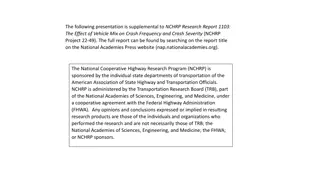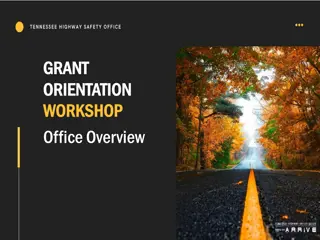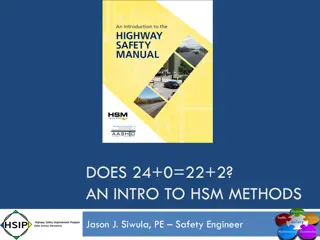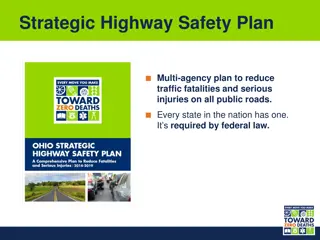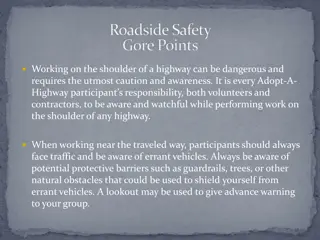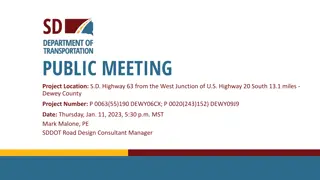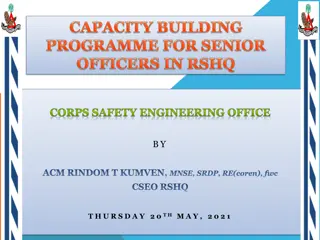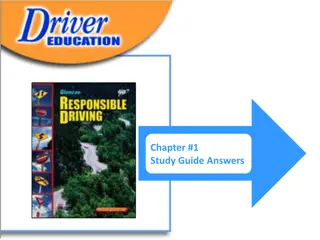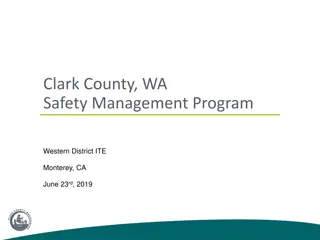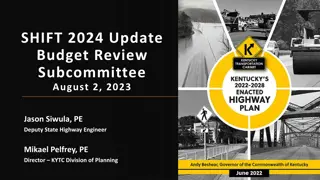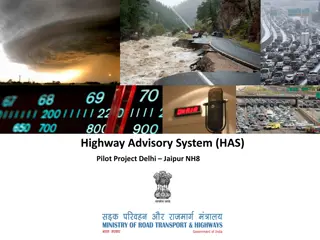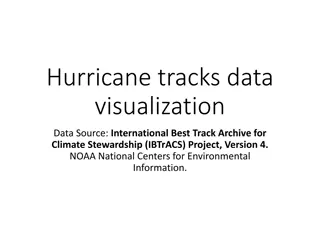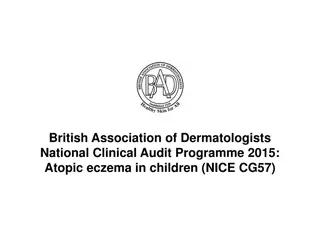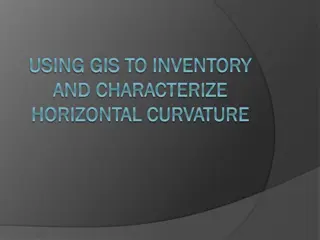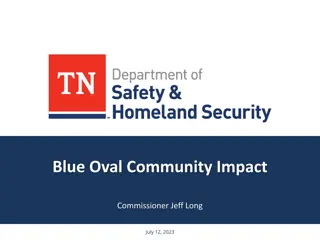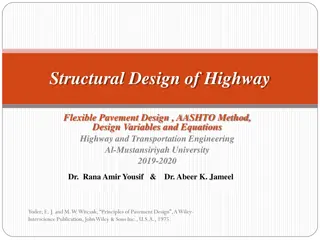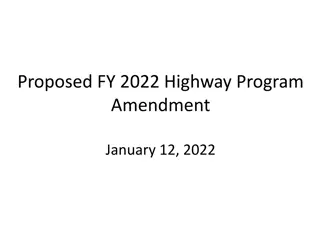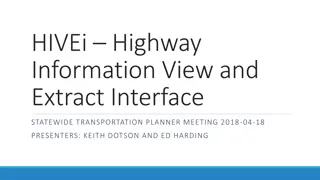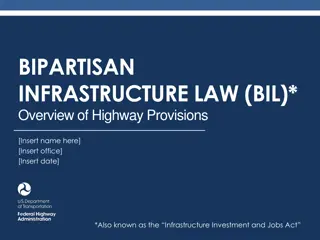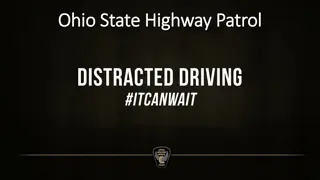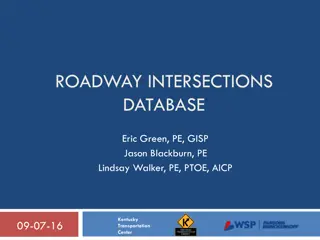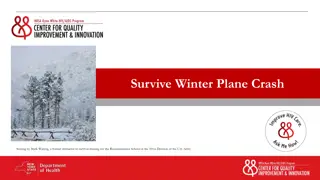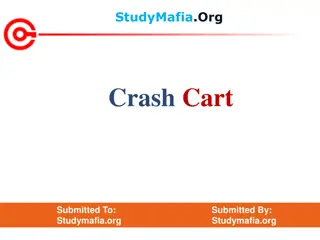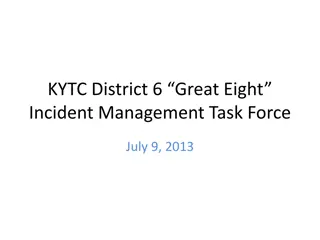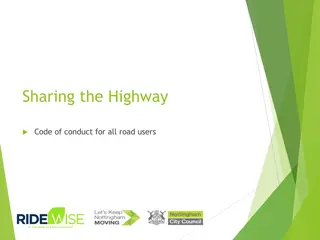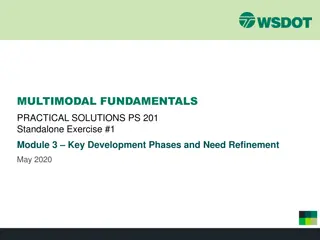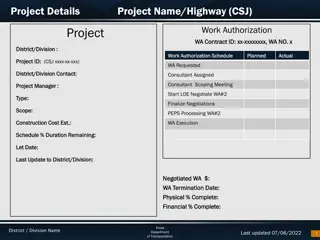Development of Crash Severity Models for Highway Safety Manual
Research findings from NCHRP Project 17-85 focused on assessing current HSM approaches for crash severity prediction, identifying gaps, developing new severity models, and creating guidance for model application. The study introduced distinctive methodologies like Quasi-induced Exposure and Ordered Probit Fractional Split. The presentation outlines project objectives, new methodologies, model frameworks, and predictions for crash severity levels.
Download Presentation

Please find below an Image/Link to download the presentation.
The content on the website is provided AS IS for your information and personal use only. It may not be sold, licensed, or shared on other websites without obtaining consent from the author. Download presentation by click this link. If you encounter any issues during the download, it is possible that the publisher has removed the file from their server.
E N D
Presentation Transcript
NCHRP Project 17 NCHRP Project 17- -85 Development and Application of Crash Severity Models for the Highway Safety Manual 85 Summary of Research Findings September 30, 2022
Presentation Outline Project Objectives Recap of New Methodologies Considered Data Sources Used for Estimation and Validation Recommended Methodologies by Facility Type QIE Estimation of Input Variables Implementation Guidance and Software 2
Project Objectives (From RFP) Assess the current HSM approaches for estimating and predicting crash count by severity Identify gaps and opportunities in the current prediction/estimation procedures Develop and validate new severity models to address the gaps and opportunities Develop a guidance document to apply the new models in a format suitable for possible adoption in the HSM 3
Distinctive Feature of New Methodologies Quasi-induced Exposure translates crash involvement to segment- level population proportions Inclusion of driver and vehicle variables as predictors Most important variables in most severity prediction models Usually only available in crash data not segment data Not at fault drivers assumed to appear randomly in crashes Necessary to aggregate groups of segments and intersections to get sufficient observations by involvement group 4
Method 1 Negative Binomial - Ordered Probit Fractional Split Modeling Framework Dataset Overview Injury Total Crash Injury ID PDO Fatal PDO Fatal 10 12 8 4 0.4 0.42 0.25 0.75 4 5 2 3 6 6 5 0 0 1 1 0.6 0.5 0.63 0 0 1 2 3 4 0.08 0.12 0.25 1 Crash proportions by severity level Crash counts by severity level Total Fatal Crash =1 Total Crash =4 Fatal Proportion = 5
Method 1 Negative Binomial - Ordered Probit Fractional Split Modeling Framework Model Prediction Total Crash Injury Injury ID PDO Fatal PDO Fatal 10 12 8 4 0.4 0.42 0.25 0.75 4 5 2 3 6 6 5 0 0 1 1 0.6 0.5 0.63 0 0 1 2 3 4 0.08 0.12 0.25 1 Ordered Fractional Split Model Predicted Severity Proportions NB Model X Predicted Total Crash Counts Predicted Severity Counts 6
Method 2 Univariate Count Modeling Framework Univariate count models to be estimated (Negative Binomial) ??= ????? ????? ????? ?1 ??2 ?????_????????,?+?? ??????,?+?? ?????,?+?? ??????,?+ +????,? Average crash frequency at this site ? (each crash severity level has its own model) Proportions of certain drivers and vehicles at this site ? (obtained from quasi-induced exposure analysis) 7
Method 3 Multilevel Discrete Outcome Modeling Framework Models to be estimated Total Crash Count Model (at segment and intersection level, using Negative Binomial) Crash Severity Discrete Outcome Model (at crash level, using PPO & ML) Driver Group Estimation (at segment and intersection level, using Quasi-Induced Exposure) Model Prediction Crash count by severity = (Predicted total crash count) (Predicted driver group proportion) (Predicted crash severity probability by driver group) 8
Recommendation Criteria Models with lower Mean Absolute Deviation or Mean Square Prediction Error across different severity levels and for both estimation and validation datasets were preferred. Consistency within the same facility group was preferred. For example, we preferred to recommend the same best model for Rural two-lane highway segments and Rural two-lane highway 3ST, 4ST, and 4SG intersections. We preferred to recommend models from the three new approaches, unless the HSM or NCHRP 17-62 models strongly outperformed them. We verified our final recommendations using an overall model performance metric that aggregates the performance measures over all severity levels for both the estimation and validation datasets. 9
Recommended Approach by Facility Type Facility Type Group Approach Two-lane Rural Highways (all types) Multilane Rural Highways: All except 4SG intersections Univariate severity count modeling Multilevel discrete outcome modeling Current (1st edition) HSM approach 4SG intersections Urban/Suburban Arterial Segments and Intersections Negative Binomial Ordered Probit Fractional Split Current (1st edition) HSM approach Urban and Rural Freeway Segments 10
Quasi-Induced Exposure Algorithm for Creating Aggregate-Level Data Challenge in getting statistically stable estimates of driving population distributions by characteristics at site-level. Overall idea is aggregating adjacent sites that are similar. ??,?,?= Meeting condition ?? ??,?,? 5, equivalently ??,?,? 5, ??,?,? ?? ? ?=1 ?=1 ??,?,? ?? ??,?,?= ? ? denotes the demographic variable (? = 1, ,?) with j levels ( ) 1, ,? .? be a site (segment or intersection). ? = 11
Implementation Guidance The guidance provides instructions for implementing the crash severity models as recommended in NCHRP Project 17-85 Facility types covered in this guidance are the same as shown in Recommended Methodologies by Facility Type , including o rural two-lane two-way roadways o rural multilane highways o urban and suburban arterials 12
Decision Flow to Use the Tool 13
Data Requirements Discussed in the Guidance Applicable AADT ranges for segments and intersections Data requirements for generating the demographic and vehicle composition variables using the QIE method o QIE roadway file o QIE driver file Data requirements for predicting the crash counts by severity o Lists of variables required for different facility types if default parameter estimates are to be used 14
Introduction of the Web-Based Application The team developed an R Shiny web-based application for generating the QIE variables and predicting crashes by severity using one of the three new modeling approaches. Shiny is an open-source R package that provides a web framework for building web applications using R. The application is available on the National Academies Press website (nap.nationalacademies.org) by searching for NCHRP Research Report 1047: Development and Application of Crash Severity Models for Highway Safety. 15
Home Page 16
NCHRP is sponsored by the individual state departments of transportation of the American Association of State Highway and Transportation Officials. NCHRP is administered by the Transportation Research Board (TRB), part of the National Academies of Sciences, Engineering, and Medicine, under a cooperative agreement with the Federal Highway Administration (FHWA). Any opinions and conclusions expressed or implied in resulting research products are those of the individuals and organizations who performed the research and are not necessarily those of TRB; the National Academies of Sciences, Engineering, and Medicine; the FHWA; or NCHRP sponsors. More information is available in NCHRP Research Report 1047: Development and Application of Crash Severity Models for Highway Safety: User Guidelines, which can be obtained at the National Academies Press website (www.nap.edu). 19


